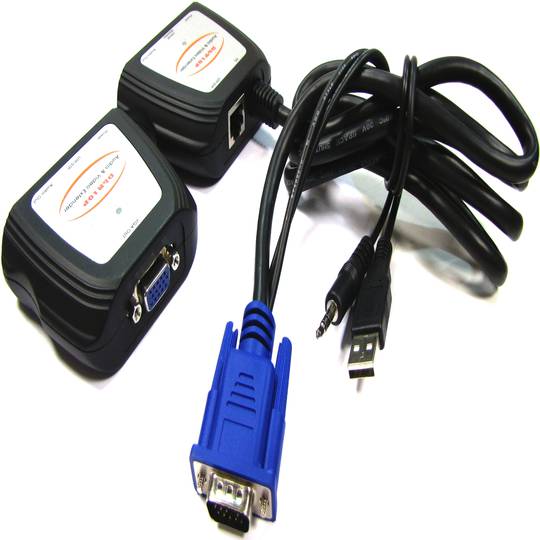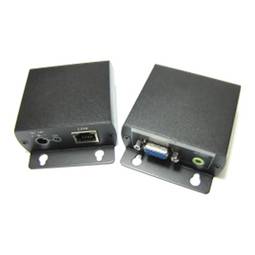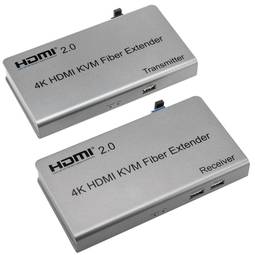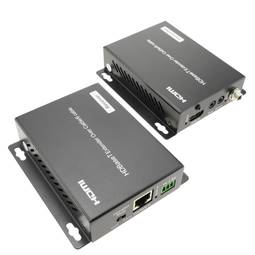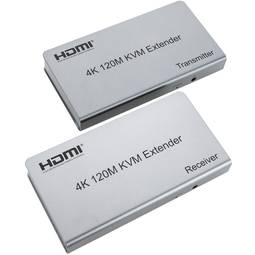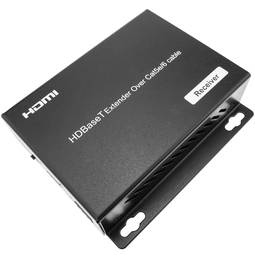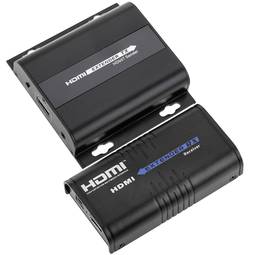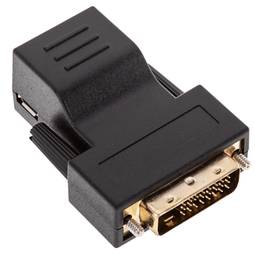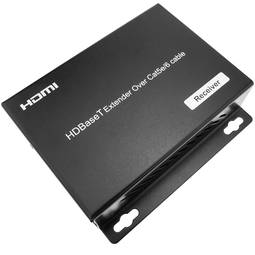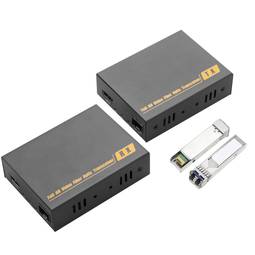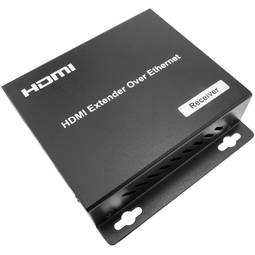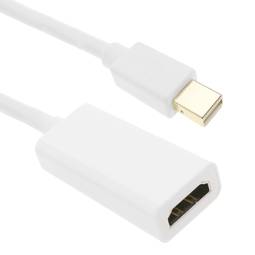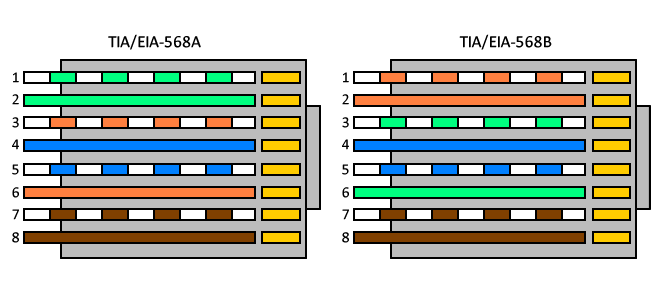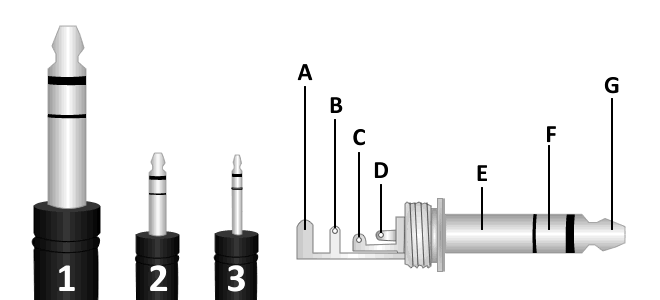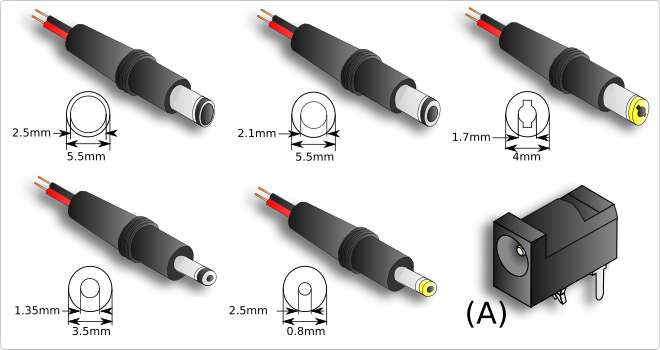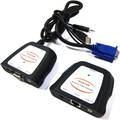12/12/2025 7:35 a.m.
https://cablematic.com/en/products/vga-and-audio-extender-on-cat5e-30-m-VG012/
https://cablematic.com/en/products/vga-and-audio-extender-on-cat5e-30-m-VG012/
VGA and Audio Extender on Cat.5e (30 m)
REF: VG012
Specifications
- Transmitter and receiver of compact size and easy to install.
- It works with UTP, FTP and STP cables from Cat.5, 5e and 6 with RJ45 connectors at the ends.
- Transmission distance of 30 m maximum.
- It does not require any kind of special configuration. Connect and operate.
- Compatible with the mamost operating systems. It does not require the installation of software or drivers.
![play_button]() Watch video
Watch video
More info
PVP
€108.49
Price including VAT:
€108.49
PVD
€95.34
PVP: Retail price.
Check conditions.
PVP: Sale price to distributors.
Check conditions.
warranty
returns
safe
We will notify you when it is back in stock.
Specifications
- Transmitter and receiver of compact size and easy to install.
- It works with UTP, FTP and STP cables from Cat.5, 5e and 6 with RJ45 connectors at the ends.
- Transmission distance of 30 m maximum.
- It does not require any kind of special configuration. Connect and operate.
- Compatible with the mamost operating systems. It does not require the installation of software or drivers.
Keywords
Did not find what you were looking for? These topic could help you
More info
Extender of audio stereo and VGA video through cable UTP, STP or FTP of category 5, 5e or 6 (Cat.5, Cat.5e or Cat.6). These are two compact modules that are interconnected by the network cable of a maximum length of 30 m (although distances of up to 50 m can also be reached with quality cable and without interference). It also functions as a duplicator of the audio and video signal as both signals are displayedand they hear in the local module and in the remote one simultaneously.
Specifications
- Transmitter and receiver of compact size and easy to install.
- It works with UTP, FTP and STP cables from Cat.5, 5e and 6 with RJ45 connectors at the ends.
- Transmission distance of 30 m maximum.
- It does not require any kind of special configuration. Connect and operate.
- Compatible with the mamost operating systems. It does not require the installation of software or drivers.
- Supports VGA resolutions up to 1280 x 1024.
- Video bandwidth: 150 MHz.
- Horizontal frequency: 30 - 100 KHz.
- Vertical frequency: 43 - 120 Hz.
- Status indicator LEDs.
- DDC support
- The transmitter has a 120 cm cable terminated in male HD15 (VGA), 3.5 mm minijack (audior stereo) and USB A male (power supply of the transmitter module). This cable is connected to the local computer that emits the audio and video signal to be transmitted.
- The transmitter has in the module itself female HD15 connectors (VGA for the local monitor), 3.5 mm female minijack (local audio), DC-female jack (optional power if there is no USB) and female RJ45 (for interconnection) with the remote module).
- The receptor has in its own module female HD15 connectors (VGA for the remote monitor), 3.5 mm female mini-jack (remote audio), female DC-jack (power supply) and female RJ45 (for interconnection with the local module).
- 5 VDC power supply is supplied to connect to the remote module.
- Gross Weight: 450 g
- Product size (width x depth x height): 9.0 x 7.5 x 2.7 cm
- Number of packages: 1
- Packages size: 22.5 x 13.8 x 8.0 cm
Technical terms
- Minijack 3.5
- USB
- VGA
- MicroUSB
- Mini USB
- Types of network cables (UTP, FTP, STP)
- Hz
- USB 3.0
- Reversible USB Type-C
- VDC
- RJ45
- Jack connector
- Categories network cables
- DC jack connector
Minijack 3.5
The minijack 3.5mm is a popular connector used primarily for headphones although its functionality is much more varied.
It consists of a maximum of three connecting parts being the largest so-called mass or negative polarity and two of smaller size and located farther end of the connector, called living or positive that correspond to each channel, such three-part plug can transmit signals in two different channels, also known as stereo signals. It also exists in a mono minijack but version composed of only two parts, a body and a living or positive.
It consists of a maximum of three connecting parts being the largest so-called mass or negative polarity and two of smaller size and located farther end of the connector, called living or positive that correspond to each channel, such three-part plug can transmit signals in two different channels, also known as stereo signals. It also exists in a mono minijack but version composed of only two parts, a body and a living or positive.











